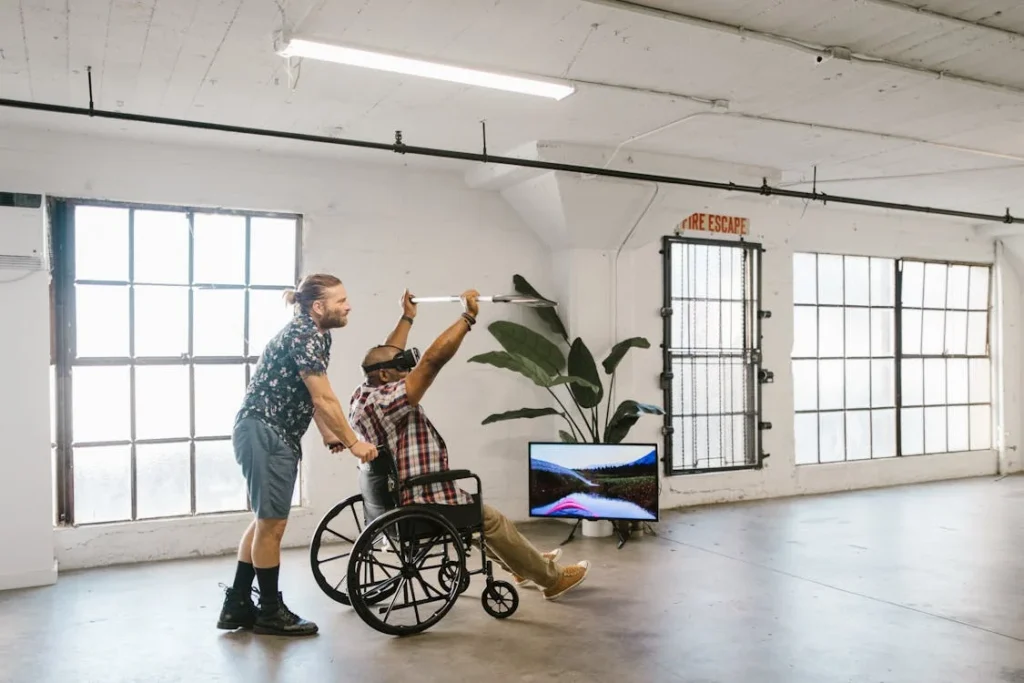When someone loses a limb or suffers severe limb trauma, life can change in a single moment. Whether it’s due to an accident, infection, or illness, the days that follow are full of uncertainty. Questions about pain, movement, work, and daily life come rushing in. But one thing is becoming clear in modern medicine: the sooner support begins, the better the outcome.
Early intervention isn’t just about first aid. It’s about making smart, timely decisions that can shape a person’s recovery for years to come. From pain management and emotional support to fitting the right prosthetic at the right time, every step matters.
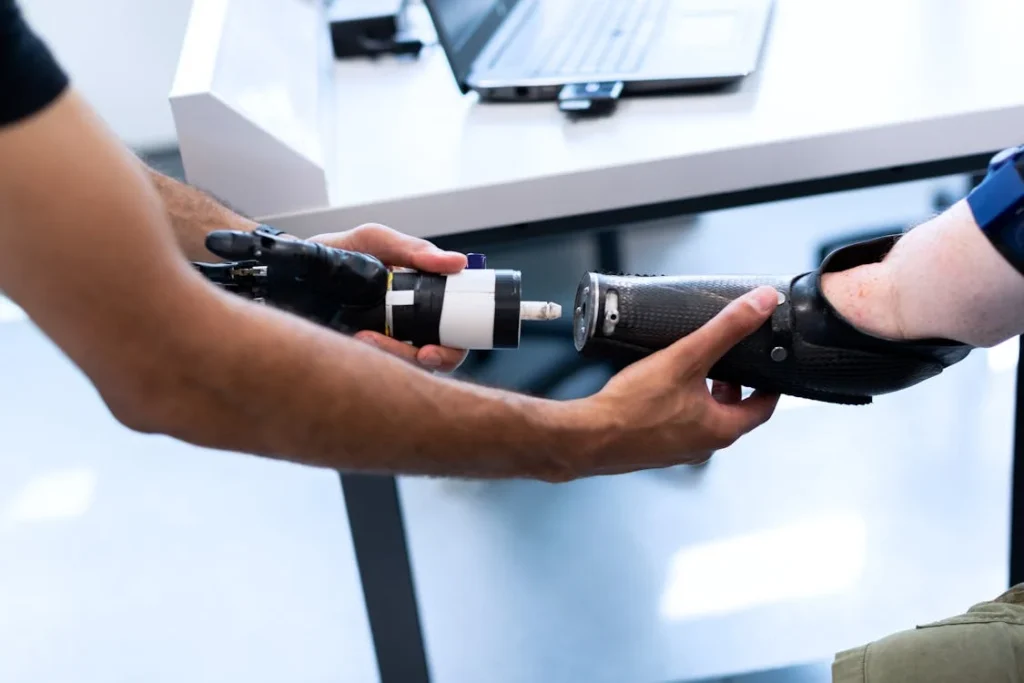
Why Timing Matters More Than Ever
The hours and days right after a serious limb injury are some of the most critical. What happens during this short window can shape how well a person recovers in the months and years ahead.
It’s not just about saving a life—it’s about saving function, movement, and the chance to return to a full life.
The First Decisions Shape the Road Ahead
Right after a limb trauma, the first team a patient meets is usually in an emergency room. In that moment, doctors are focused on stopping bleeding, reducing shock, and preventing infection.
These steps are essential for survival. But they also set the stage for mobility in the future.
For example, when a surgeon decides where and how to perform an amputation, it isn’t just about removing damaged tissue. It’s about preserving as much healthy muscle, bone, and nerve as possible.
The more that can be saved, the more control the person can have over a future prosthetic limb. A higher amputation might heal well, but it often limits what kind of device can be used and how much movement is possible.
Even small decisions—like how to close the wound, how to protect the nerves, or when to begin gentle movement—can change long-term outcomes.
That’s why it’s so important to involve rehabilitation specialists and prosthetic experts early, sometimes within the first few days after surgery.
Pain Control Can Protect Future Movement
Pain after trauma is expected, but it needs to be managed in the right way. Without proper care, pain can become long-lasting and difficult to treat.
In some cases, patients develop phantom limb pain—where they feel pain in the part of the limb that is no longer there. This can interfere with walking, balance, and even sleep.
Doctors are now learning that early pain management can prevent these problems. Instead of only using medication, care teams often include nerve blocks, psychological support, and even simple physical techniques like massage or mirror therapy.
The earlier these are used, the lower the risk of long-term issues.
When pain is under control, patients are more likely to begin moving, doing therapy, and using assistive tools sooner. That early movement helps keep the muscles strong, reduces stiffness, and prepares the body for prosthetic use later on.
Mental Health Is Physical Health
Losing a limb or going through severe trauma affects more than the body. It changes how a person sees themselves and their future. Feelings of fear, sadness, anger, and isolation are normal—but if left untreated, they can slow down healing.
Early emotional support is not just about kindness. It can directly impact mobility. A person who feels hopeless or afraid may avoid therapy, refuse to wear a prosthetic, or stop moving altogether.
That creates a cycle where weakness, stiffness, and poor balance make recovery harder.
But when someone gets counseling, support from peer groups, or even just clear, gentle information about what to expect, they are more likely to stay engaged in their care. They are also more likely to ask for help when something feels wrong.
Hospitals that involve mental health experts from the very beginning often see better recovery rates. Patients who feel heard and supported tend to move more, try harder in rehab, and stick with their recovery plans—even when it gets difficult.
The First Steps Toward Mobility
Mobility doesn’t begin with a prosthetic. It begins with the first time a patient sits up, moves to a wheelchair, or starts learning how to balance again. These early steps teach the brain and body to adjust.
Rehabilitation specialists often start this work in the hospital, sometimes just days after surgery. Even small exercises can make a big difference. They help keep muscles awake, improve blood flow, and teach new ways of moving.
For example, learning how to shift weight while sitting or how to roll over in bed can reduce the risk of pressure sores and keep the body aligned for future movement.
This is also the time when care teams start talking about the future. They might begin evaluating which kind of prosthetic would be a good fit based on the injury, the patient’s goals, and their living environment.
Having this conversation early helps patients feel like they are moving forward, not just healing from the past.
These first steps—though small—send a message to the body and brain: recovery is possible. That message can shape the entire journey ahead.
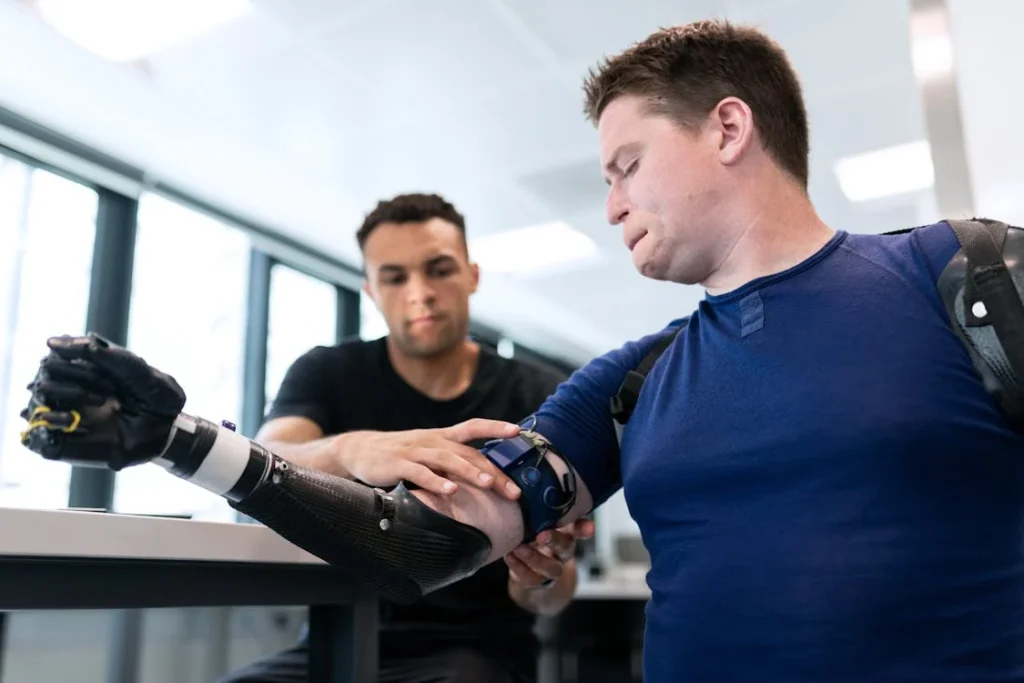
Planning for Prosthetics: Sooner Is Smarter
One of the most important parts of early intervention is deciding how and when to introduce a prosthetic. This doesn’t mean rushing a device into place, but rather preparing the body and mind for it in advance.
When the conversation starts early, and when the body is cared for properly from the beginning, the chances of successful prosthetic use go up.
Timing the Introduction of a Prosthetic
After an amputation or serious limb injury, the body needs time to heal. Swelling, wound care, and pain management must come first. But that doesn’t mean waiting too long to think about prosthetics. In fact, delaying these conversations can make recovery more difficult.
In the past, prosthetics were sometimes introduced many months after surgery. Today, many experts recommend beginning evaluations within the first few weeks.
This doesn’t mean a child or adult will be fitted right away—but it means preparing their body, especially the remaining limb or “residual limb,” so it’s ready when the time comes.
Proper shaping of the limb, scar care, and early strength exercises are all part of this preparation. If the limb is not managed well during this phase, it can lead to issues like poor socket fit, muscle loss, or joint stiffness later on.
These problems can make walking or gripping with a prosthetic much harder.
By introducing gentle, step-by-step plans early on, care teams can make the transition smoother. It becomes part of the healing journey—not a separate, intimidating process later on.
The Role of Pre-Prosthetic Training
Before a prosthetic is even worn, the body needs to be trained to support it. This is called pre-prosthetic training, and it includes a mix of physical and occupational therapy.
The goal is to build strength, flexibility, and control—not just in the injured limb, but throughout the entire body.
For someone who has lost a leg, learning how to shift weight, improve balance, and protect the spine becomes essential.
For someone missing an arm or hand, shoulder and core strength need to improve to help control a prosthetic more smoothly. These may sound like small things, but they’re foundational.
Pre-prosthetic training also helps prevent unhealthy movement habits. Sometimes, people adjust their posture or movement in ways that feel easier in the short term but cause strain or injury over time.
Starting therapy early gives them healthier ways to move from the beginning, which protects long-term mobility.
This kind of training is also a chance to rebuild confidence. A person may feel unsure about their body or abilities after trauma.
Each small victory—lifting an object, walking a few steps, or even just standing straighter—starts to rebuild belief in their own strength.
A Team Approach Makes Recovery Stronger
Early planning works best when everyone involved is communicating. The surgeon, prosthetist, therapist, and mental health provider all have a piece of the puzzle.
When they work together—alongside the patient and family—they can build a clearer, more complete recovery plan.
This means that questions get answered sooner. Adjustments are made in real-time, not weeks later. And when problems come up—as they often do—they’re caught and corrected early.
Even simple things, like learning how to put on a shrinker sock or how to care for healing skin, can make a big difference when taught early and clearly.
When care teams support these basics right away, patients feel more in control and less overwhelmed.
A team approach also helps set realistic goals. No two people recover the same way, and early conversations about expectations, daily routines, and long-term hopes can guide the plan in the right direction.
When the care team truly listens, the patient feels seen—and that motivation can carry them through the hardest parts of recovery.
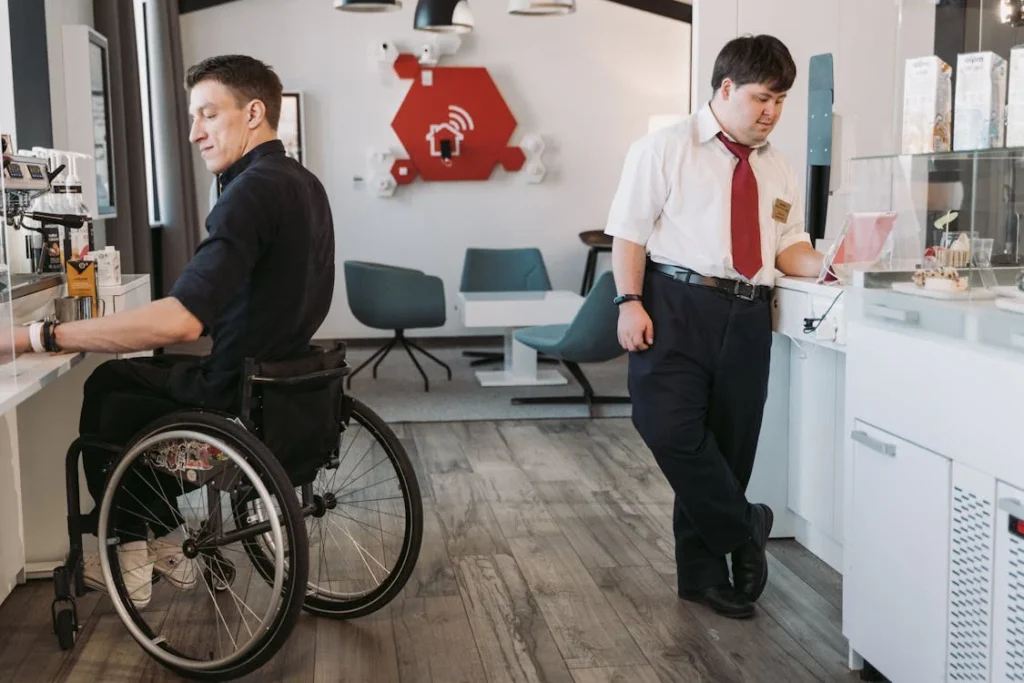
Staying Mobile While Waiting: The Role of Temporary Support
When someone loses a limb, there’s often a waiting period before they can be fitted with a permanent prosthetic. The body needs time to heal. Swelling has to go down.
The residual limb has to strengthen and settle into its final shape. But that doesn’t mean a person has to stay still during this time. In fact, staying active—safely and with support—is one of the best ways to protect long-term mobility.
Temporary Devices Keep Muscles and Minds Engaged
Early on, doctors and therapists may recommend temporary or transitional prosthetic devices. These are not meant to last forever. They are designed to help people begin moving again while their body heals.
For lower limb loss, this might be a temporary walking aid or a simple socket with a pylon and foot. For upper limb trauma, it might be a training hand or adaptive tool that supports specific movements.
These devices may look basic, but they serve an important purpose. They give the brain and body a chance to start learning new patterns. Instead of waiting passively, patients get to practice balance, weight-shifting, and coordination.
This keeps muscles active and prevents stiffness or weakness from setting in.
Using a temporary device also gives the patient and care team valuable feedback. They can see what kinds of challenges come up during daily use, what movements are easy or difficult, and how the patient responds emotionally.
All of this helps shape the design and features of the permanent prosthetic later on.
Just as important, early mobility builds confidence. After a traumatic injury, the fear of falling or feeling helpless can be strong. When a person stands up, walks a short distance, or lifts an object using a supportive aid, it creates a moment of progress.
Those moments matter—they help turn fear into determination.
Adaptive Tools That Support Daily Life
In addition to temporary prosthetics, there are other tools that help patients keep their independence during recovery. These might include adaptive utensils for eating, custom grips for writing, or household items designed for one-handed use.
These tools are small, but their impact is big.
Being able to feed yourself, write your name, or use a phone can bring back a sense of normalcy. When patients stay involved in daily life—at home, school, or work—they remain emotionally connected and socially engaged.
That reduces isolation, supports mental health, and lays the foundation for a more successful long-term recovery.
These tools also help the care team spot areas where a person needs extra support. If someone struggles with balance while brushing their teeth or opening a door, therapists can design specific exercises or offer adjustments that make those tasks easier.
Instead of discovering these challenges months later, they’re addressed early, which speeds up adaptation.
In the years ahead, these adaptive tools will become smarter and more personalized. Some will include sensors or feedback features that help patients improve their movements over time.
Others will be designed to work alongside permanent prosthetics, creating a more seamless experience from recovery to long-term use.
Avoiding Long Periods of Inactivity
One of the risks during early recovery is prolonged immobility. If a patient stays inactive for too long, muscles weaken, joints stiffen, and the body loses overall conditioning.
This makes it harder to walk, lift, or return to everyday routines later on. For older adults or those with other health conditions, this decline can happen quickly.
Early intervention helps break this cycle. By using temporary devices, adaptive tools, and targeted therapy, patients stay in motion. Even small tasks—like transferring from a bed to a chair or reaching for a cup—can help keep the body active.
Over time, these actions rebuild strength, coordination, and balance.
Staying active also helps reduce complications like blood clots, pressure sores, or joint contractures. These medical issues can delay prosthetic fitting or even cause long-term damage.
But with early movement and proper support, many of these risks can be reduced or avoided entirely.

Healing at Home: Creating Environments That Support Recovery
The healing process doesn’t stop when a patient leaves the hospital. In fact, most of the hard work happens later—at home, during rehab visits, and in daily routines.
That’s why preparing the right environment from the beginning is just as important as medical treatment or physical therapy. A safe, supportive space helps people move more freely, rebuild habits, and regain independence faster.
Preparing the Home for Safe Movement
After limb trauma or amputation, everyday activities can become challenging. Getting out of bed, using the bathroom, or cooking a simple meal can take more energy and balance than before.
If the home isn’t adapted to these changes, it can lead to stress, accidents, or even injury.
Early home assessment is becoming a bigger part of recovery planning. Professionals such as occupational therapists now work with families to look at the layout of a home and suggest simple but important changes.
These might include adding handrails in hallways, removing slippery rugs, widening doorways, or adjusting the height of a bed or toilet seat.
When these changes are made early—before the patient returns home—they help keep the person moving safely. That movement helps prevent muscle loss, keeps the joints active, and reduces the risk of falling into a sedentary routine.
It also gives the patient more control over their daily life, which supports emotional recovery.
Patients recovering in a home that’s been properly adapted often start walking or using their prosthetic sooner. They also tend to need fewer readmissions to hospitals or emergency rooms because the risk of falls or complications is lower.
Emotional Safety Matters Too
It’s not just about physical safety. The emotional feel of the home environment matters just as much. After trauma, patients often deal with fear, frustration, or even shame—especially if they suddenly need help doing things they used to do alone.
Creating a space that feels positive, calm, and supportive can go a long way. That might mean setting up a recovery corner with personal items, soft lighting, and comfortable seating.
It could involve giving the person some privacy when needed or building new routines that encourage gradual independence.
Families also play a big role. When they understand the recovery plan and feel confident about how to help, it creates a sense of teamwork.
Instead of feeling like they’re constantly “watching over” the patient, family members become part of the healing process. That shared purpose can lift everyone’s spirits and reduce stress.
Early education for caregivers—on how to support movement, spot signs of strain, or assist with exercises—can prevent misunderstandings or injuries.
It also reduces fear on both sides. Everyone feels more prepared, and the patient is more likely to stay engaged in their recovery.
Bridging the Gap Between Clinic and Home
The transition from hospital to home is a turning point. If handled poorly, it can lead to setbacks. But if the bridge is built thoughtfully, it can accelerate progress.
This is where technology is starting to make a difference. Tele-rehabilitation platforms, for example, allow patients to connect with therapists from home.
Video calls, movement tracking, and app-based exercise plans keep therapy going even when in-person visits are difficult. These tools also give therapists a clearer picture of how the patient is functioning in real life—not just in a clinic room.
In the future, we’ll likely see more smart home tools that connect to prosthetics or therapy programs. For example, motion sensors might track how often a person stands, walks, or uses stairs.
The data can help therapists fine-tune exercises and spot risks before they turn into problems.
What matters most is keeping the recovery process active. A home that supports safe movement, emotional strength, and communication with care teams becomes a powerful part of the healing journey.
It helps patients stay mobile—not just in their bodies, but in their lives.
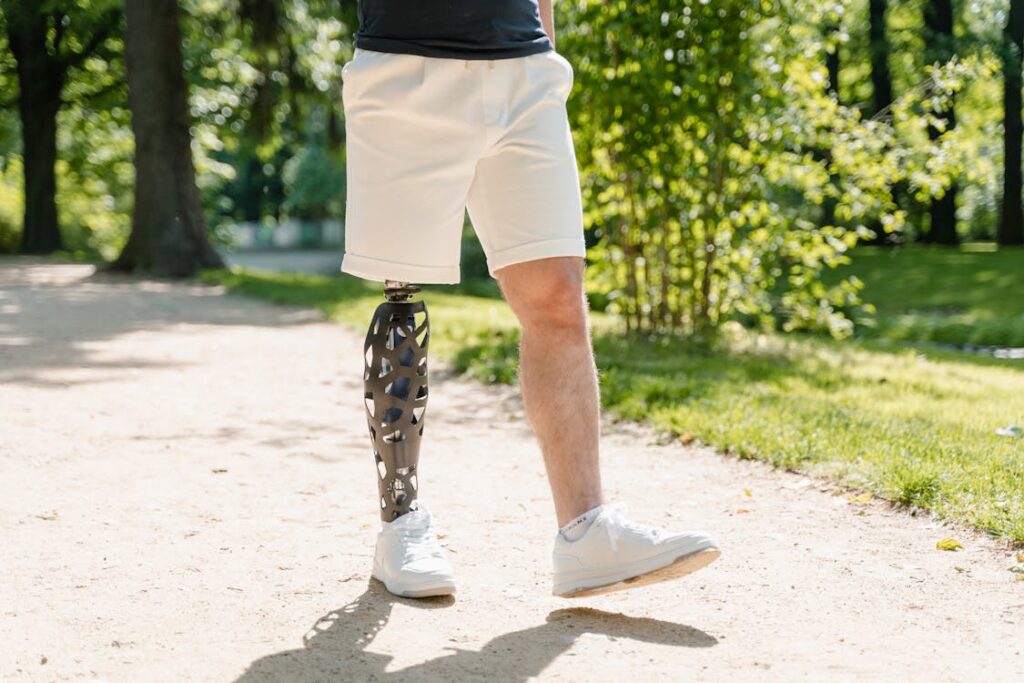
From Recovery to Reintegration: Preparing for Life After Trauma
Healing from limb trauma doesn’t end with walking or regaining movement. True recovery includes returning to the life a person knew—or building a new one with purpose, dignity, and confidence.
Whether someone is a student, a working adult, or a parent, early steps in care can shape their ability to return to school, work, and community life.
Early Planning Builds Long-Term Independence
When someone is in the hospital after a traumatic injury, conversations often stay focused on pain, wound care, and mobility. These are all essential. But there’s something else that should begin early: planning for what comes next.
If a child is recovering, when and how will they return to school? Will they need support writing, climbing stairs, or using learning tools? If an adult was working, what tasks will be hard to do now? Can they return to the same role, or will training be needed?
By asking these questions early—sometimes even before the first prosthetic is fitted—rehabilitation teams can build a roadmap that leads not just to recovery, but to full reintegration.
Therapists can shape exercises that focus on real-world tasks. Counselors can help with confidence and motivation. And prosthetists can recommend devices that suit not just the body, but the lifestyle of the person.
Waiting until a patient is physically recovered to start these conversations often leads to delays, missed opportunities, or unnecessary dependence.
But when reintegration is built into the recovery plan from the beginning, people are more likely to return to fulfilling roles in their lives.
School and Career as Motivation
For many patients—especially teenagers and adults—the desire to return to a role they love can become a driving force in recovery.
A young student may dream of going back to class with friends. A parent may want to cook dinner again for their family. A worker may miss the pride of earning an income and feeling useful.
These aren’t small goals. They are part of identity. And the earlier they are acknowledged, the stronger the emotional drive behind the physical work of recovery.
That’s why more rehab teams are including vocational counselors, school coordinators, and life skills coaches in early care planning.
These professionals help identify what matters most to the patient. Then, they help the care team build therapy goals that support those outcomes.
Even small adaptations—like practicing fine motor control to grip a pen or typing with one hand—can rebuild a sense of capability. When a person starts to feel ready for life outside the clinic, it gives every step in rehab deeper meaning.
Community Belonging Affects Physical Progress
A person doesn’t recover in isolation. The communities they return to—schools, workplaces, neighborhoods—can either support their progress or slow it down.
That’s why outreach is now becoming part of early intervention. Some rehab teams now help patients reconnect with schools, employers, or community centers before discharge.
They help educate teachers or coworkers, suggest physical adjustments to spaces, and ease the transition back into familiar settings.
If these connections are made too late, patients can feel anxious, misunderstood, or excluded. But when the path is built early, returning to daily life feels less like a challenge and more like a return home.
This sense of belonging also feeds back into physical recovery. People who feel socially connected are more likely to stay active, keep appointments, and use their prosthetics consistently.
Their motivation stays high because they see real-world benefits—not just clinical milestones.
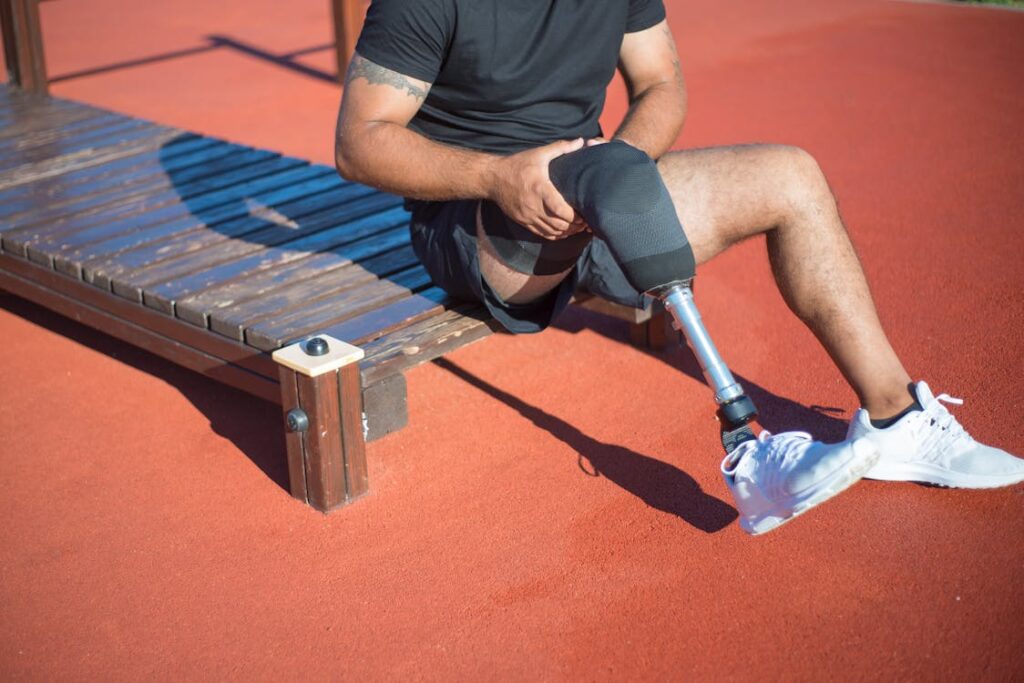
Respecting the Person, Not Just the Injury: The Role of Culture in Recovery
In medicine, it’s easy to focus on anatomy—nerves, bones, muscle groups. But people aren’t just bodies. They carry with them family histories, cultural beliefs, spiritual values, and personal identities.
These things shape how they experience trauma, how they approach healing, and what kind of care they feel comfortable accepting. In India, where social norms and cultural values vary widely, early intervention must also be culturally sensitive to be truly effective.
How Beliefs Influence Recovery Decisions
When someone loses a limb, they’re not just dealing with physical loss—they may also face complex emotional or social concerns. In some communities, there may be stigma attached to using prosthetics.
Others may rely heavily on spiritual or traditional healing practices alongside medical care. Some families might hesitate to discuss mental health or therapy openly. Others may prioritize quick return to work over long-term physical recovery.
Ignoring these layers doesn’t make them disappear—it just builds friction between patients and the people trying to help them. But when early intervention includes respectful, culturally aware conversations, trust grows.
Patients feel seen, heard, and safe. And when trust is strong, people are more likely to stick with treatment plans, attend therapy, and explore prosthetic options early.
Healthcare providers trained to ask open-ended questions, involve family members when appropriate, and respect cultural practices can turn what feels like a cold medical process into a warm human partnership.
This can make the difference between a patient avoiding care—or embracing it with full commitment.
Language, Communication, and Family Involvement
Early intervention relies on communication. But in a country with over 100 spoken languages and countless dialects, not everyone speaks the language of their surgeon, therapist, or prosthetist.
Misunderstandings can lead to missed instructions, fear of asking questions, or confusion about what’s expected.
Using local languages, translators, or culturally appropriate visuals can make early recovery smoother. Even simple gestures—like using familiar terms instead of clinical jargon—can lower anxiety and increase understanding.
For example, calling a prosthetic a “new hand” instead of a “myoelectric device” can make it feel more approachable to a child or elder.
Family involvement is another key factor. In many Indian households, health decisions are shared among multiple people. Parents, spouses, or elders may have strong opinions about care.
Including them in conversations from the start ensures alignment, reduces friction, and builds a support system around the patient that continues well after hospital discharge.
Culturally Appropriate Rehabilitation Environments
The setting where recovery takes place can either feel inviting—or alienating. Imagine a rural patient asked to do therapy exercises in a clinic filled with unfamiliar machines, using instructions in a language they don’t understand, surrounded by people who don’t look or live like them. It’s not just uncomfortable—it can be discouraging.
Rehabilitation programs that respect local lifestyles, habits, and environments see better outcomes. If a patient is returning to a farming village, therapy might include squatting, climbing uneven ground, or carrying water.
If they live in a multi-generational home, exercises might focus on household duties. These tasks may not be in a textbook, but they are central to that person’s identity.
By including real-life movements, culturally familiar routines, and flexible therapy schedules, rehab becomes something patients can relate to.
They stop feeling like they’re being asked to change everything—and start seeing recovery as a return to their way of life.
Conclusion
Early intervention after limb trauma is about more than quick treatment. It’s about setting the stage for long-term movement, independence, and dignity. From the first hospital decision to therapy at home, every step taken early can shape how well someone walks, works, and lives years later.
What we’ve seen is that true recovery isn’t just physical. It’s emotional, social, and deeply personal. When care teams act early—and act with compassion, cultural awareness, and clear planning—patients gain more than mobility. They regain control over their lives.
In the years ahead, the focus must stay on timely, thoughtful care that treats the person, not just the injury. Because the right steps in the beginning don’t just heal a limb—they build a future.



